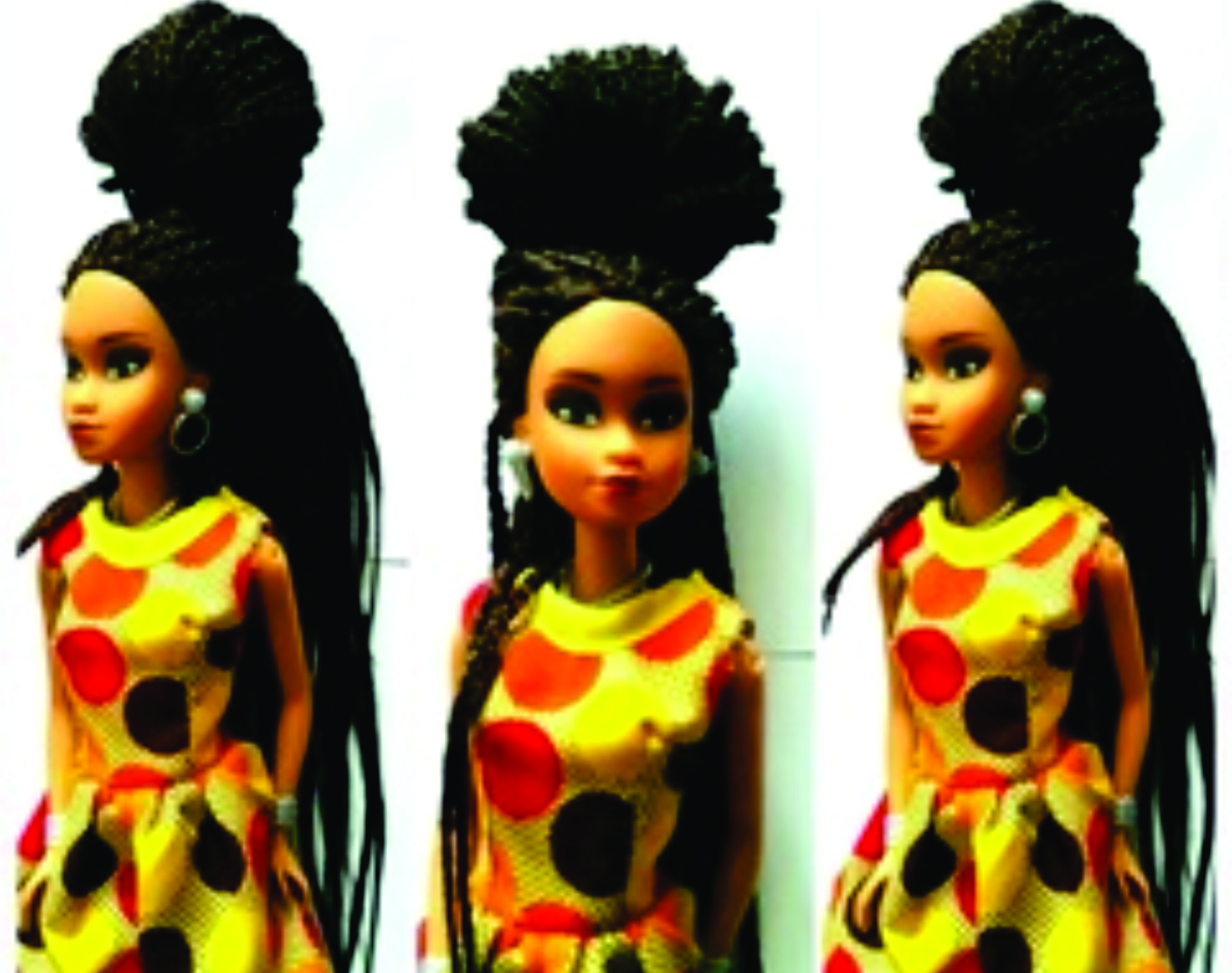Leaving a culture where dolls must be white, a Nigerian entrepreneur is shoving his show-stopping black dolls in the faces of doll-crazy Americans come summer
By SEGUN ELIJAH
AS The Trump and The Hill conclude their barnstorms in the U.S this summer for the November presidential poll, fashion businessman Taofick Okoya will begin his tour of Uncle Sam to push his own candidates: a bevy of pretty faces called Queens of Africa and Naija Princesses. And his audience are African Americans girl children who need self-esteem amidst the barrage of ego-bashing their colour provokes.
To the African girl, in Nigeria and elsewhere, white is always beautiful. And their mothers, too, have a similar turn of mind when they buy dolls for their girls. “There’s still somewhat of a colonial brainwashing present in the country,” said Taofick. “Store owners would tell me, ‘Oh no, black dolls don’t sell, give us more white dolls’.”
But in the snow-white toy industry, the young entrepreneur is trying to buck the trend. He’s been helping his dolls Nneka, Azeezah, and Wuraola work it as black models in Africa, Canada, and others. All the sculpting he’s done on the dolls so far is obviously to make them all sexed-up. ”We offer different hair textures, ranging from wavy to short and curly, as well as coarse hair. We’ve given the body a bit more curves, and we’re planning on doing a fuller butt in the near future,” said Taofick. Their lips, too, are fuller now, and noses rounder. “It’s a way of showing also that “African” isn’t just one look. We celebrate both skinny and curvaceous women.’ Like Barbie.
The American shape-smith that created Barbie made her equally well stacked. But the difference between her and Wuraola is now clearer—no more in black or white, pan-cake flat or fleshy. It’s in the sales.
In the Nigerian market, Queens now sell like hotdogs: 9000 units every month. According to a Reuters report last year, the black doll hogged about 15 percent of the market—nine years after FICO, manufacturers of the queens, hit the market. The prices too are different. A Barbie goes for N10,000while a Nneka sells for N1, 300.
There’s no price war between FICO and Mattel, Barbie’s maker. Just that Taofick’s toy business means more than a money spinner. It’s also a mission. “To show African children that ‘black is beautiful’ by enabling them to play with dolls that reflect their culture and heritage.”It’s also a project, he said on the website, which aims at inculcating positive attributes and interest into the African girl child—where she is.
ALSO SEE: Teenage Oruru now a mother
Which is why Taofick, with his Coming to America campaign, will storm doll fairs in New York, Chicago, Los Angeles, Washington D.C. and Houston, for the next two months.
In a sense, he’s also being a smart ass heading for America. The Nigerian market is freezing because of recession. Not many will be willing to shell out N1300 for a blinking queen of Africa now, though they can get a Naija princess, a local alternative, on the cheap: N600.
Distribution is also hectic. “Apart from the more high-brow stores such as Shoprite and The Game Store, it’s difficult to be present across multiple stores across several states,” Taofick told Forbes recently.“But the US market is structured in a more efficient manner, which allows us to reach more people,” He is also encouraged by the American doll-clutching culture.
Yet going to America is never a picnic. Not even for marketing black toys in a market where Barbie is all the rage. Taofick has been told he can’t easily get his feet in door of those large department stores he’s eyeballing. The specialist stores could be accommodating, though.
That’s asnag, and could make the heart of an entrepreneur sink. But hehas something going for him: the strain of entrepreneur’s DNA that runs in the Okoyas. His father, owner of Eleganza, has made the mark in the plastic wares and household utensils manufacturing sector in Nigeria. So the young Okoya can’t help taking his chance now.
After all, Taofick pushed things when he started out in 2007 as the creator of the first black toys in Nigeria. Then he was only inspired by his daughter’s identity crisis spawned by white toys—something others could have waved off as girlish. But the idea clicked inside him. And it’s become the bomb in Nigeria, where the doll culture is just kicking in. Why won’t America fall in love with Taofick’s hotties of black dolls?

 Business6 days ago
Business6 days ago
 Business6 days ago
Business6 days ago
 Education6 days ago
Education6 days ago
 Crime6 days ago
Crime6 days ago
 Business1 week ago
Business1 week ago
 Covid-196 days ago
Covid-196 days ago
 Business6 days ago
Business6 days ago
 Latest4 days ago
Latest4 days ago

